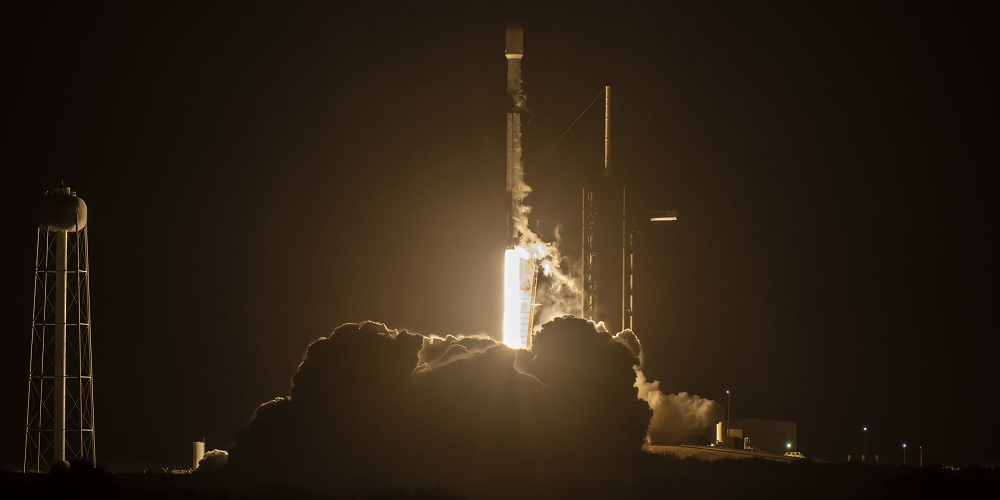The observations confirm what researchers have suspected for some time: that water may play an important role in planetary formation.
In the research, scientists used Atacama Large Millimeter/Submillimeter Array (ALMA for short) in Chile. Using a telescope, they looked at the young, sun-like star HL Tauri, which is about 450 light-years away from Earth. Around this star is what is called a protoplanetary disk, which is filled with matter from which planets can eventually form. With the help of ALMA, researchers searched for water in that disk. And they were not deceived. In the paper Nature astronomy Scientists write that they have found large amounts of water vapor precisely in places where planets might form. “Not only did we detect water – which researchers have done before – but we also determined quite precisely where it was located in the disk,” explains researcher Mathieu van der Doncht. Scientias.nl Outside.
Planet formation
For example, observations reveal that the interior of the protoplanetary disk contains at least three times as much water as all the oceans on Earth. There is a large amount of this water in a part of the disc where we also find a fairly well-known cavity in that disc. Such cavities – actually ring holes – are created in the gas- and dust-rich disk as planetary-like objects make their first orbits around their parent star, attracting the surrounding gas and dust and thus growing larger. “Our latest images show large amounts of water vapor at various distances from the star, including a gap where a planet may now be forming,” said lead researcher Stefano Facchini. This indicates that the observed water vapor may affect the chemical composition of planets forming in these regions.
Alma's strength
Special notes; Never before have researchers been able to map how water is distributed in a cool, stable disk of gas and dust around a young star, thus ideal for planetary formation. “I never thought we could image oceans of water vapor in the same region where the planet would likely form,” Facchini admits. This is certainly not intuitive. Because finding water in space using a telescope on Earth is very difficult. Not least because of the large amount of water vapor in our Earth's atmosphere, which can significantly disrupt observations. But with ALMA's help we have now succeeded. “So far, ALMA is the only facility capable of distinguishing the signal from water in a cold, planet-forming disk,” says researcher Wouter Flemmings. This is partly due to ALMA's location: the observatory, which has dozens of radio dishes, is located at an altitude of 5,000 meters in Chile's Atacama Desert. There, the observatory is literally high and dry, so it is relatively unaffected by water vapor in Earth's atmosphere. This ultimately leads to very interesting recordings of the cold disk around HL Tauri, showing that this disk contains a very large amount of water.
Dust particles
Importantly, researchers can now not only confirm that the cold, stable disk – and thus very suitable for planet formation – around HL Tauri contains water vapor, but they can also determine the location of that water in fairly detail. And to gain more knowledge about the role water can play in planetary formation. These planets are born from dust particles in the disk. Dust particles act as a kind of “seed” for planet formation. They collide and clump together, causing larger and larger pieces of debris to orbit around the star. This debris can eventually grow into planets. Water is suspected to play a role in this “growth process.” Scientists believe that when it's cold enough for water to freeze on dust particles, everything sticks together better, creating an ideal place for planets to form. The new research provides more clarity about the plausibility of this hypothesis, according to Facchini. “Our results show that the presence of water can influence the evolution of a planetary system, just as it did in our solar system about 4.5 billion years ago.”
To live
What's more, the research doesn't just have implications for planetary formation, van der Donckt says. Because water plays a role not only in the formation of planets, but also in the origin of life (as we know it). “The discovery of water in HL Tauri does not mean there is life, but it gives us more knowledge about where water can be found when planets form and indirectly gives us an idea of what type of planets could form and whether they are possible to form on them.” life.”
In the coming years, researchers expect to obtain a better picture of how planets form and to what extent water plays a decisive role in this. In this regard, for example, there are hopeful expectations for the upgrade that ALMA will soon undergo and the operation of ESOs Very large telescope. The latest observatory in particular is expected to provide an unparalleled view of the interior of protoplanetary disks, or where Earth-like planets can see daylight. “What's interesting is that the disk around HL Tauri was the first disk imaged by ALMA in about ten years,” says van der Doncht. “We've grown wiser since then, but as you can see, there's still a lot to discover!”

“Total coffee specialist. Hardcore reader. Incurable music scholar. Web guru. Freelance troublemaker. Problem solver. Travel trailblazer.”






More Stories
SpaceX has launched two European Galileo navigation satellites into space
Sudden thawing of permafrost releases much more carbon dioxide than expected
Maria Rosen plays with space and rebellion